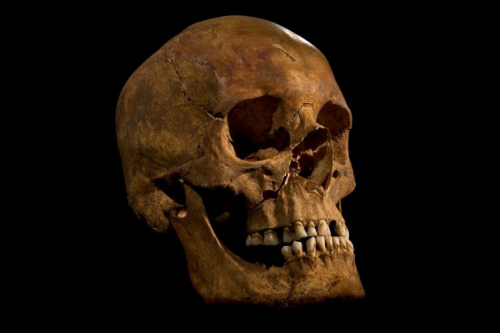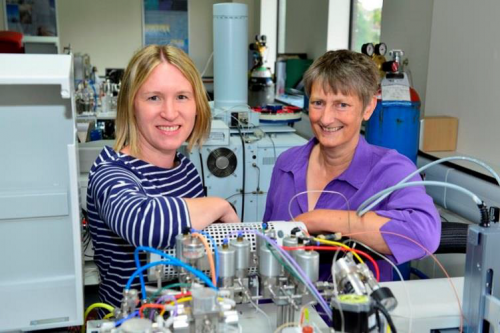Bone chemistry reveals royal lifestyle of Richard III

A recent study by the British Geological Survey, in association with researchers at the University of Leicester, has delved into the bone and tooth chemistry of King Richard III and uncovered fascinating new details about the life and diet of Britain's last Plantagenet king. The study, published in Elsevier's Journal of Archaeological Science indicates a change in diet and location in his early childhood, and in later life, a diet filled with expensive, high status food and drink. This forensic study, the most complete to have been conducted on a medieval monarch, will feature in a documentary, Richard III: The New Evidence, airing on Channel 4 on Sunday 17th August at 9pm.
Isotope analysis of bone and tooth material from King Richard III has revealed previously unknown details of his early life and the change in his diet when he became King two years and two months before he was killed at the Battle of Bosworth. The research examines the changes in chemistry found in the teeth, the femur and the rib; all of which develop and rebuild at different stages of life.
Isotope measurements that relate to geographical location, pollution and diet (strontium, nitrogen, oxygen, carbon and lead) were analysed in three locations on the skeleton of Richard III. The teeth, which form in childhood, confirmed that Richard had moved from Fotheringay castle in eastern England by the time he was seven. The data suggest that during this time he was in an area of higher rainfall, older rocks and with a changed diet relative to his place of birth in Northamptonshire. By examining the femur, which represents an average of the 15 years before death, researchers show that Richard moved back to eastern England as an adolescent or young adult, and had a diet that matched the highest aristocracy.
The third location, the rib, renews itself relatively quickly, so it only represents between 2 and 5 years of life before death. Data from the isotopes in this bone indicate the greatest change in diet. Although an alteration in the chemistry between the femur and the rib of Richard III could indicate relocation, historical records show that Richard did not move from the east of England in the 2 years prior to his death when he was King. As such, this chemical change is more likely to represent a change in diet relating to his period as King. The difference suggests an increase in consumption of freshwater fish and birds, which were popular additions to royal banquets at the time and included birds such as swan, crane, heron and egret. In addition, the bone chemistry suggests he was drinking more wine during his short reign as King and reinforces the idea that food and drink were strongly linked to social status in Medieval England.

Dr Angela Lamb, Isotope Geochemist and lead author of the paper says, "The chemistry of Richard III's teeth and bones reveal changes in his geographical movements, diet and social status throughout his life."
Richard Buckley from the University of Leicester Archaeological Services and lead archaeologist in the Richard III dig, said, "This cutting edge research has provided a unique opportunity to shed new light on the diet and environment of a major historical figure –Richard III. It is very rare indeed in archaeology to be able to identify a named individual with precise dates and a documented life. This has enabled the stable-isotope analysis to show how his environment changed at different times in his life and, perhaps most significantly, identified marked changes in his diet when he became king in 1483."
The Dig for Richard III was led by the University of Leicester, working with Leicester City Council and in association with the Richard III Society. The originator of the Search project was Philippa Langley of the Richard III Society.
More information: "Multi-isotope analysis demonstrates significant lifestyle changes in King Richard III" by Angela L. Lamb, Jane E. Evans, Richard Buckley, Jo Appleby ( dx.doi.org/10.1016/j.jas.2014.06.021 ); Journal of Archaeological Science.
Journal information: Journal of Archaeological Science
Provided by Elsevier
















